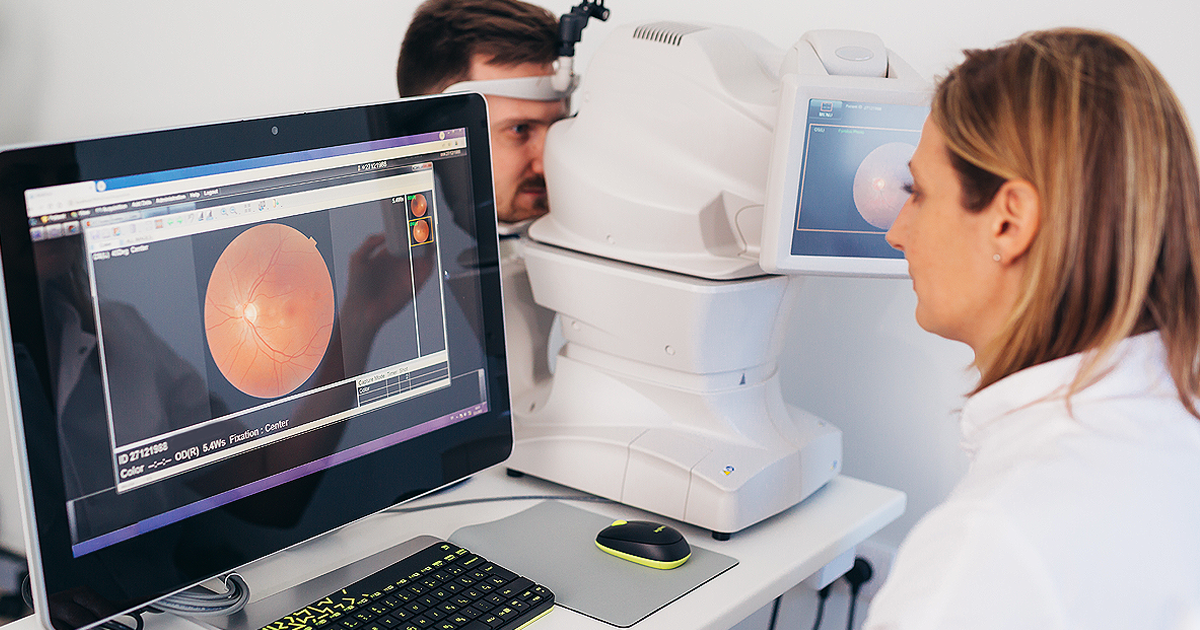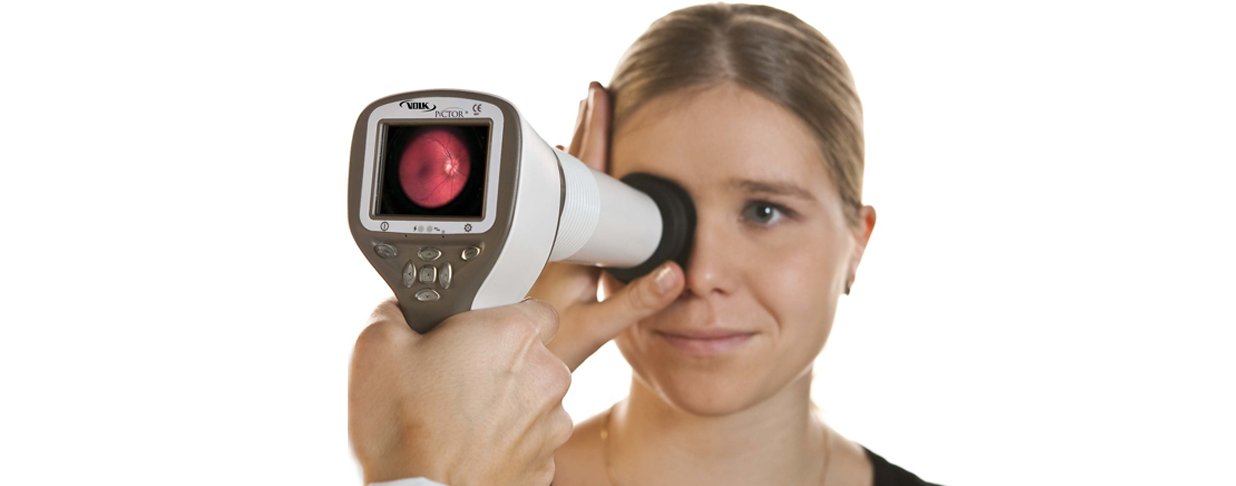Alzheimer’s is a serious brain disease that is often difficult to diagnose and costly to manage and treat. There are 10.7% of Americans aged 65 and over live with Alzheimer’s disease—and that percentage may more than double by 2060.1 The good news? Recent research shows that we may be able to detect the presence of Alzheimer’s through annual eye exams in the near future.
How Alzheimer’s appears in the eyes—and impacts vision
A neurodegenerative disease, Alzheimer’s damages the neurons in the brain, resulting in progressive dementia and memory loss, affecting communication, memory, language and motor functions.1 Studies show that diseases of the brain like Alzheimer’s can also impact eyesight.
Brain cell damage from Alzheimer’s disease and other forms of dementia includes the extending optic nerve of the eye and the retina. The impact can result in symptoms that manifest as vision problems—such as trouble reading, depth perception and difficulty tracking objects.2
Certain eye conditions such as Age-Related Macular Degeneration (AMD), cataracts and diabetic retinopathy can also increase the risk of developing dementia and Alzheimer’s disease. Those with multiple eye conditions are at an even higher risk.3
Can an eye exam detect Alzheimer’s?
While it’s not yet possible to diagnose Alzheimer’s disease solely through an annual eye exam, research confirms that amyloid proteins associated with Alzheimer’s disease are detectable in the eyes.4 There is also strong evidence suggesting changes in the brain may mirror changes in the retina—indicating that an eye exam may soon be able to detect early signs of Alzheimer’s.5
A recent review of multiple studies on Alzheimer’s pathology supports that changes in retinal blood vessels may be a biomarker for patients with an early stage of the disease.6
The correlation found is that deterioration in blood vessels of the retina seems to occur when similar changes are happening in the brain.6 So how can these blood vessels and changes be detected by an eye doctor? That’s where an OCTA scan comes in.
Advancements in early detection
While heavily funded research is still in progress, there is an existing method that can help.
OCTA scans (optical coherence tomography angiography) are noninvasive imaging tests that allow an eye doctor to view tiny blood vessels behind the eye.
An OCTA scan can detect the following in patients who may not yet be aware of the disease:6
- Signs of retinal deterioration
- Adequacy of capillary blood flow
- Blood vessel density changes over time
For patients displaying symptoms of the disease, an OCTA scan can help confirm diagnosis by detecting low levels of the following:6
- Macular blood vessel density
- Macular perfusion density
- Ganglion cell-inner plexiform layer
To note, more research is needed to determine if an OCTA scan can be used to formally diagnose Alzheimer’s in people who have the disease—prior to the appearance of symptoms.
In addition to OCTA scans, physicians may do further analysis through a patient’s medical history, cognitive and functional assessments, brain imaging, cerebrospinal fluid measurements and blood tests to make a comprehensive diagnosis, no matter what stage the disease may be in.7
The importance of vision care
At EyeMed, we are committed to helping all our members see life to the fullest. That means making vision care more accessible and a key part of employee’s overall healthy habits.
Routine eye exams are critical to monitoring potential vision problems related to Alzheimer’s and dementia.8 And because of their increased Alzheimer’s risk, those with macular degeneration, glaucoma and cataracts should continue prioritizing vision and other routine health screenings.8
To learn more, speak with your EyeMed representative or visit eyemed.com.
•••
1 Julia, N.; “Dementia & Alzheimer’s Disease Statistics and Facts (2024 Update)”; CFAH; cfah.org; Updated January 11, 2024.
2 Rauch, K.; “Alzheimer’s Disease, Dementia and the Eye”; American Academy of Ophthalmology; aao.org; July 26, 2022.
3 Solan, M.; “Eye diseases linked to a higher risk of dementia”; Harvard Health Publishing; health.harvard.edu; January 1, 2022.
4 Cohen, S.; “What the eyes say about Alzheimer’s disease”; UCLA Health; uclahealth.org; April 6, 2023.
5 Lang, K.; “Are the eyes the windows to our health? Sighting dementia, MS, and diabetes”; Medical News Today; medicalnewstoday.com; February 18, 2023.
6 Whelan, C., Amin, S., MA, CAQ, FAAFP; “Can Early Signs of Alzheimer’s Disease Be Seen in the Eyes?”; Healthline; healthline.com; August 12, 2022.
7 “Medical Tests for Diagnosing Alzheimer's“; Alzheimer's Association; alz.org; 2024.
8 Mukamal, R., “Eye Exams May Help Identify Seniors at Risk of Dementia;” American Academy of Ophthalmology; aao.org; April 25, 2022.
Fully insured clients are underwritten by: Fidelity Security Life Insurance Company®, Kansas City, MO 64111 and Fidelity Security Life Insurance Company® of New York.




